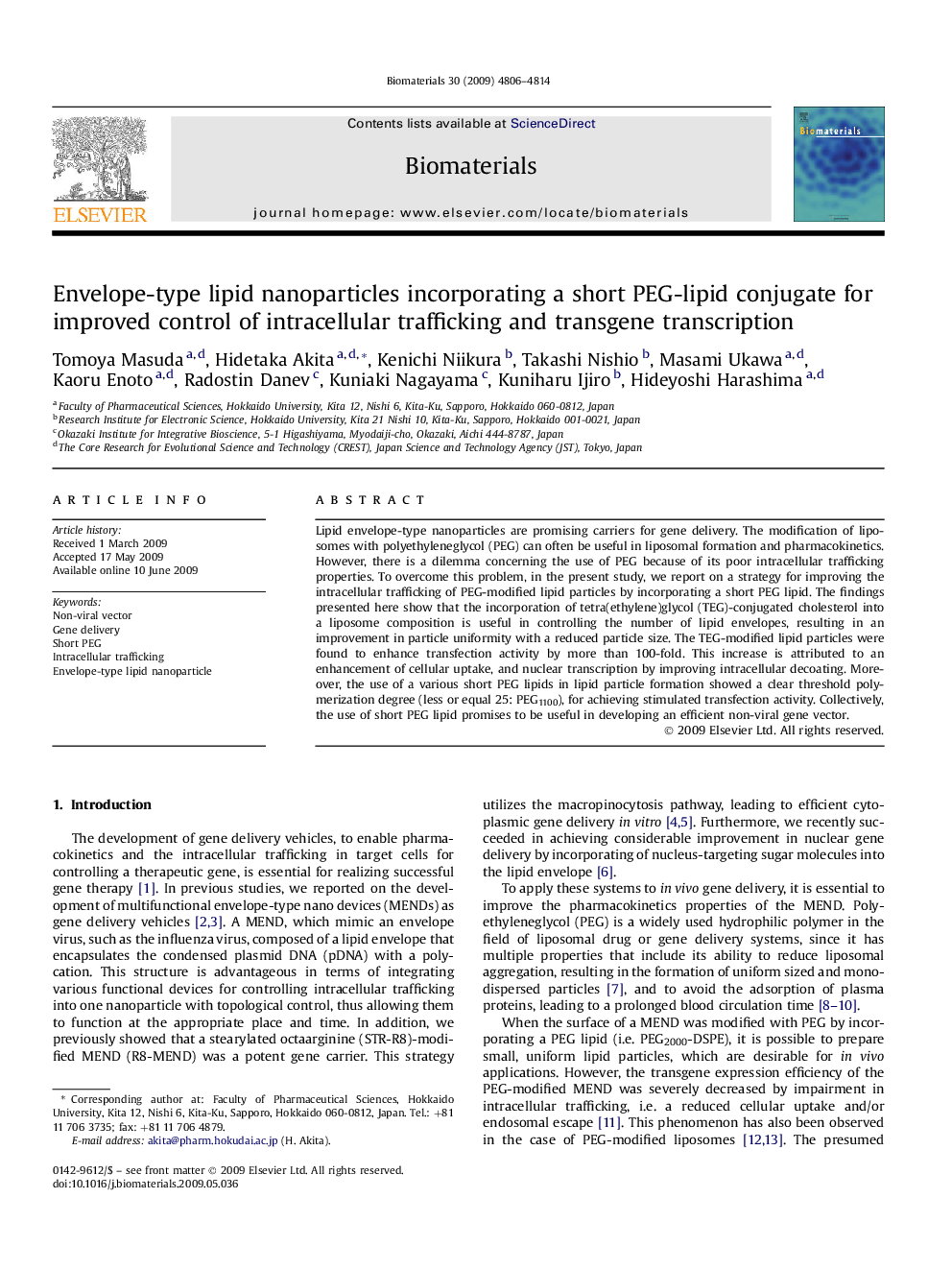| Article ID | Journal | Published Year | Pages | File Type |
|---|---|---|---|---|
| 10230087 | Biomaterials | 2009 | 9 Pages |
Abstract
Lipid envelope-type nanoparticles are promising carriers for gene delivery. The modification of liposomes with polyethyleneglycol (PEG) can often be useful in liposomal formation and pharmacokinetics. However, there is a dilemma concerning the use of PEG because of its poor intracellular trafficking properties. To overcome this problem, in the present study, we report on a strategy for improving the intracellular trafficking of PEG-modified lipid particles by incorporating a short PEG lipid. The findings presented here show that the incorporation of tetra(ethylene)glycol (TEG)-conjugated cholesterol into a liposome composition is useful in controlling the number of lipid envelopes, resulting in an improvement in particle uniformity with a reduced particle size. The TEG-modified lipid particles were found to enhance transfection activity by more than 100-fold. This increase is attributed to an enhancement of cellular uptake, and nuclear transcription by improving intracellular decoating. Moreover, the use of a various short PEG lipids in lipid particle formation showed a clear threshold polymerization degree (less or equal 25: PEG1100), for achieving stimulated transfection activity. Collectively, the use of short PEG lipid promises to be useful in developing an efficient non-viral gene vector.
Related Topics
Physical Sciences and Engineering
Chemical Engineering
Bioengineering
Authors
Tomoya Masuda, Hidetaka Akita, Kenichi Niikura, Takashi Nishio, Masami Ukawa, Kaoru Enoto, Radostin Danev, Kuniaki Nagayama, Kuniharu Ijiro, Hideyoshi Harashima,
